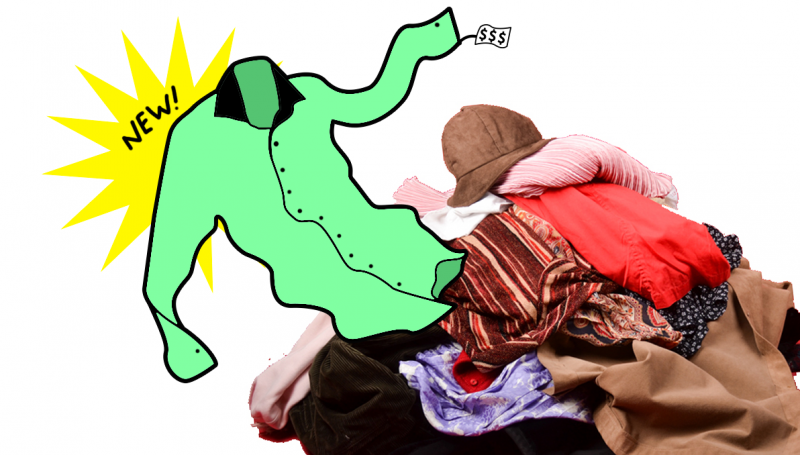As we’ve been told time and time again, the best way to shop sustainably and ethically is to shop at your local thrift or consignment stores. While it would be ideal for everyone to consume in this way, it isn’t always realistic, especially if your style is more in line with current designs and styles in fashion.
But, there is a way to be more eco-conscious, even if thrift store styles aren’t for you.
Shop the conscious lines retail companies have to offer
The environmental crisis caused by fast fashion is hardly avoidable at this point. This is why many popular retailers have created permanent lines in their seasonal collections that use sustainable materials and practices when producing clothes. Despite Zara being one of the many fast fashion brands with damaging practices that cause massive impacts on the environment, it has taken a small step in the right direction with the launch of their Join Life initiative in late 2016, that aims to create “contemporary designs made from sustainable materials.”
As explained in a Who What Wear article, at the forefront of Zara’s priorities is ensuring that they make as little an impact on the environment as possible. This is achieved through the use of “sustainable cotton, forest-friendly alternatives, and recycled fibres and recycled polyester” as well as working on a plan to have all of their distribution centres, offices, and stores running on clean energy by 2025.
Look at materials
As we all know, the environment that garments are created in, as well as the process used to create them, are important variables when it comes to determining whether or not they are environmentally conscious items. However, one very crucial element that most don’t think to consider is the fabrics they are made with. There are certain fabrics that are extremely damaging to the environment and require many resources to produce.
Which fabrics are these, exactly? According to another Who What Wear article, conventional cotton uses up extremely large amounts of water and pesticides to grow, which end up trickling into waterways, causing pollution. You should also avoid polyester and nylon, which are made using fossil fuels, as well as conventional viscose which requires many chemicals to break down.
Instead, opt for organic cotton, which has an all-around lower environmental impact from the time it is grown, processed and dyed. Linen is a great option, as it does not require pesticides to continue its growth, and can be easily integrated to create fabric blends. When it comes to warmer fabrics, wool would be your best bet, as it is often sourced from the animal in a highly ethical way. Another eco-conscious fabric is bamboo which, according to a document by Telio.com, “is one of nature’s most sustainable resources.”
When buying from fast fashion brands, shop consciously
If you absolutely cannot abstain from buying from fast fashion brands, at the very least, make sure to shop smartly when you do. In order to avoid over-buying from these brands, make sure you’re knowledgeable about your style and your closet.
Firstly, know the general gist of your style and, through this, determine if you envision yourself reverting to a specific piece over and over again for years to come. By knowing your personal style, you’ll avoid those trendy or impulse purchases that will end up in your donation pile before the year is through. If you haven’t yet nailed your personal style, instead of buying different pieces that will potentially end up going to waste, look to inspiration websites like Pinterest so you can visually discern what you like.
Another way to avoid frequent purchasing from fast fashion websites or stores is to create a capsule wardrobe—a streamlined selection of clothes that can be combined to create multiple outfit combinations. This way, you always have the basics you need and, if you feel like you’re missing something, you know exactly what that piece is.
So, the next time you let yourself off the hook for not being more environmentally conscious when purchasing from fast fashion brands, think twice and consider these tips.
Photo by Britanny Clarke, Graphic by Kayla-Marie Turriciano




